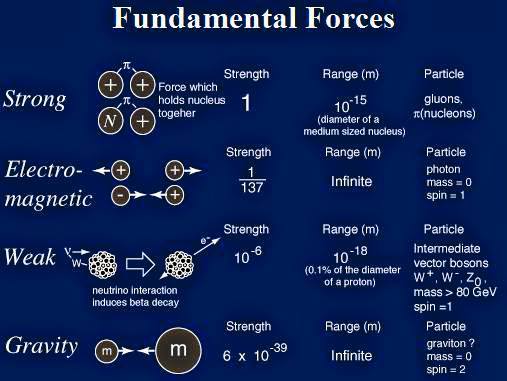The strong force, one of the four fundamental interactions in nature, is responsible for binding quarks together to form protons and neutrons, and subsequently, these nucleons together within atomic nuclei. The endeavor to elucidate the intricate properties of the strong force is a remarkable story of scientific inquiry and triumph through ingenuity. So, how exactly did physicists disentangle the complexities of this formidable force? The answer to this question unfolds through a historical tapestry woven from experimental observations, theoretical advancements, and the relentless pursuit of understanding the subatomic realm.
To begin, one must dive into the early 20th century, a period marked by groundbreaking discoveries in the field of particle physics. The advent of quantum mechanics introduced a new language—a mathematical framework that described the behavior of particles on microscopic scales. Concurrently, the concept of nuclear forces began to take shape. Scientists like Ernest Rutherford initiated a comprehensive exploration of the atomic nucleus, discovering that it was not merely a homogenous mass but a complex structure governed by powerful interactions.
The first significant strides in understanding the strong force stemmed from the pioneering work of Wolfgang Pauli and his exclusion principle. However, it was the subsequent discovery of the neutron by James Chadwick in 1932 that catalyzed a shift in focus toward the glue that binds protons and neutrons together. Physicists were faced with an intriguing challenge: How could they explain the stability of atomic nuclei in light of the electromagnetic repulsion between positively charged protons?
This challenge necessitated the formulation of the nuclear force, which was initially conceptualized as a residual effect of the underlying strong interaction that governed quarks. The strong force is strikingly different from its electroweak counterparts; it is attractive at short ranges but becomes repulsive at exceedingly close distances. This duality was essential to maintaining nuclear stability without the nucleus collapsing under the immense electromagnetic repulsion.
Theoretical breakthroughs during the mid-20th century began to elucidate the nature of the strong force more clearly. The introduction of quantum chromodynamics (QCD) in the 1970s marked a pivotal leap forward. QCD formulated the interactions between quarks and gluons—the force carriers of the strong interaction—through the framework of gauge theory. This theoretical paradigm provided profound insights into how the strong force operates, namely through the exchange of virtual particles known as gluons and the concept of color charge.
A critical component in the exploration of the strong force was the advent of particle accelerators, which allowed physicists to probe the fundamental components of matter. Facilities such as Fermilab and CERN conducted a series of high-energy experiments, where protons and neutrons were accelerated to relativistic speeds and collided, resulting in an overwhelming number of interactions. This led to the discovery of numerous particles, including baryons and mesons, that further substantiated the quark model proposed by Murray Gell-Mann and George Zweig.
These experimental revelations not only corroborated the quark model but also illuminated the nuanced interactions governed by the strong force. For example, deep inelastic scattering experiments conducted at DESY in the late 1960s provided evidential support for the existence of point-like constituents within protons, signifying that protons are, in fact, composed of quarks held together by gluons. This was a confirmation of the QCD framework and lent credence to the idea that the strong force is indeed a fundamental interaction emerging from the color charge of quarks.
However, while theoretical models began to coalesce, the complexities of the strong force presented notable challenges that required multifaceted solutions. One such conundrum emerged from the phenomenon known as confinement, where quarks remain perpetually bound within hadrons and cannot be isolated. This phenomenon defies classical expectations, causing physicists to ponder philosophical questions regarding the fundamental nature of reality.
As research progressed, advances in lattice QCD emerged as a compelling tool for investigating the strong force. Through numerical simulations of QCD on a discrete space-time lattice, physicists could confront the difficulties posed by confinement and asymptotic freedom—the latter describing how the strong force weakens at short distances. These innovative techniques demonstrated the intricate structure of hadrons and led to precise calculations of mass and decay rates, allowing for greater clarity in theoretical predictions.
Additionally, the discovery of the Higgs boson at the Large Hadron Collider in 2012 further enhanced the understanding of particle interactions, albeit indirectly related to the strong force. The intricate interplay between different fundamental forces garnered new insights into the fabric of the universe, underscoring the interconnectedness of the strong force with electromagnetism and weak interactions in describing the behavior of particles.
In conclusion, the determination of the strong force’s details has been a riveting saga articulated through the interplay of profound theoretical frameworks and empirical validation. The paradigm shift from classical mechanics to quantum mechanics allowed for a deeper comprehension of nuclear interactions, while the relentless march of experimental innovation enabled scientists to unveil the subtleties of quark-gluon dynamics. Thus, the question remains: in a universe governed by astonishingly powerful forces, how much more remains to be unveiled? The journey of exploration in particle physics promises to persist, revealing layers of understanding about the cosmos that continues to ignite human curiosity and ingenuity.












